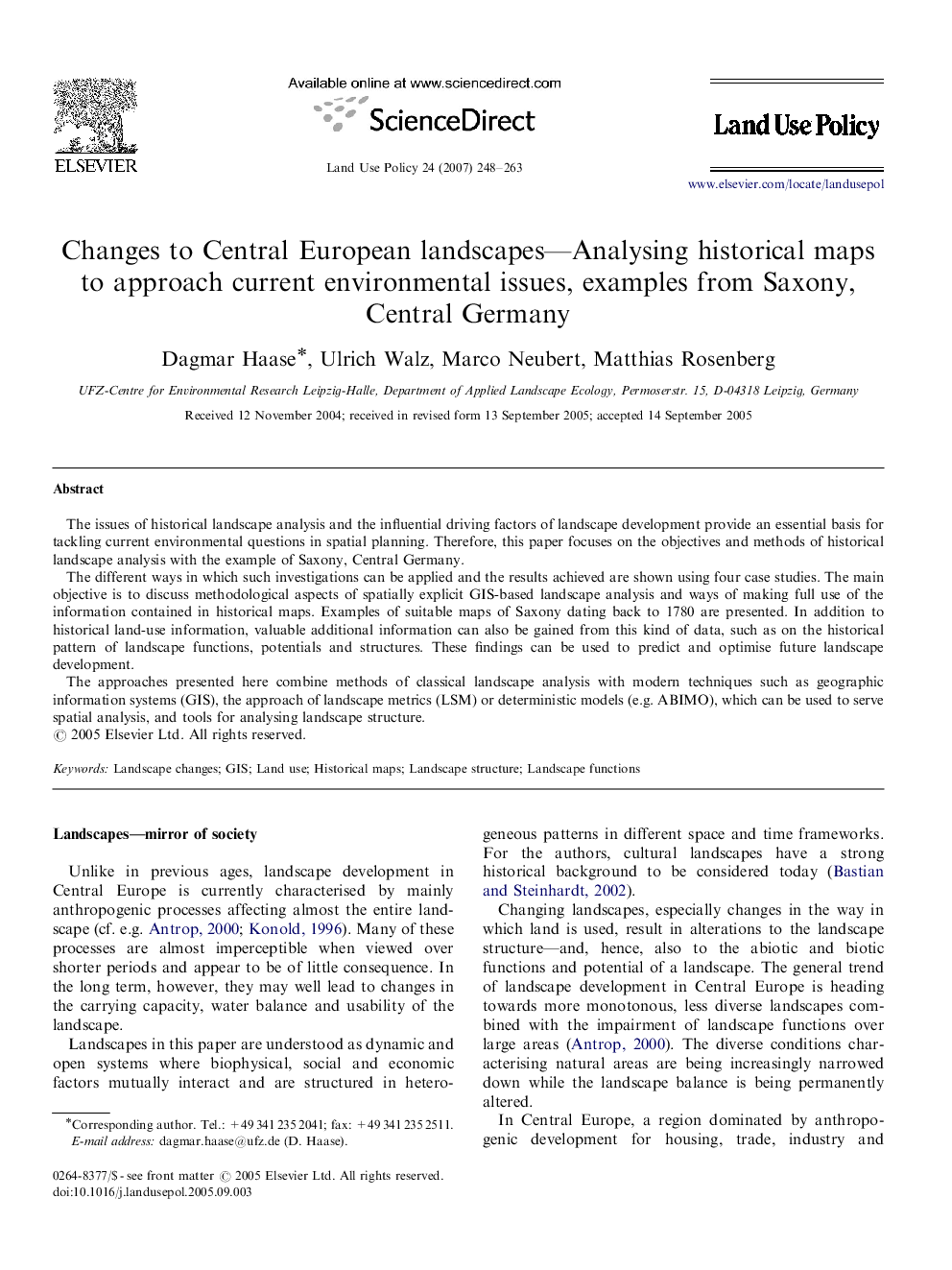| Article ID | Journal | Published Year | Pages | File Type |
|---|---|---|---|---|
| 93861 | Land Use Policy | 2007 | 16 Pages |
The issues of historical landscape analysis and the influential driving factors of landscape development provide an essential basis for tackling current environmental questions in spatial planning. Therefore, this paper focuses on the objectives and methods of historical landscape analysis with the example of Saxony, Central Germany.The different ways in which such investigations can be applied and the results achieved are shown using four case studies. The main objective is to discuss methodological aspects of spatially explicit GIS-based landscape analysis and ways of making full use of the information contained in historical maps. Examples of suitable maps of Saxony dating back to 1780 are presented. In addition to historical land-use information, valuable additional information can also be gained from this kind of data, such as on the historical pattern of landscape functions, potentials and structures. These findings can be used to predict and optimise future landscape development.The approaches presented here combine methods of classical landscape analysis with modern techniques such as geographic information systems (GIS), the approach of landscape metrics (LSM) or deterministic models (e.g. ABIMO), which can be used to serve spatial analysis, and tools for analysing landscape structure.
